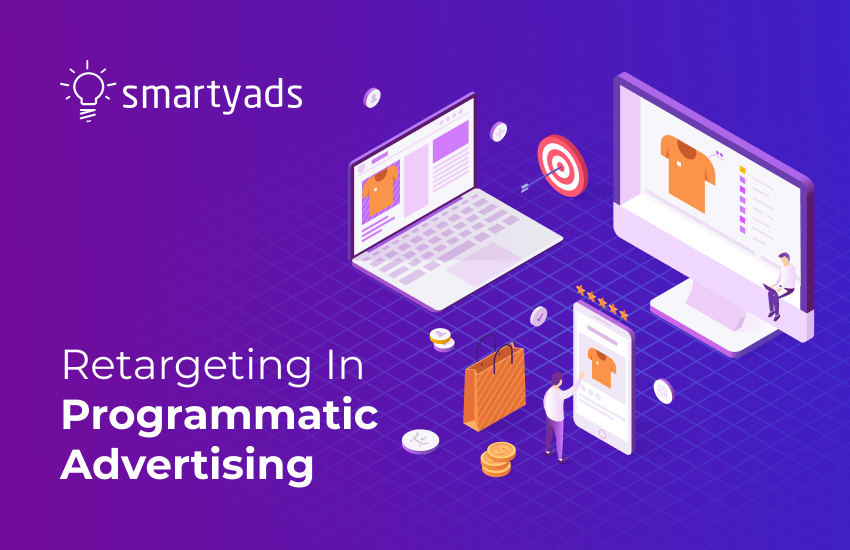The scary truth of the digital advertising world is that 92% of users who visit your site are not yet ready to make a purchase. But don't be intimidated by this number and don't give up!
There is a proven solution to this problem. And it consists in using programmatic advertising and retargeting.
In this article, we will look at what retargeting campaigns are, how they work and how effective they can be.

What are digital retargeting ads?
It's a marketing strategy that helps you reach and return potential customers who have shown interest in your product without converting.
Digital ad retargeting helps you convince these people to consider buying from your brand or accepting your advertising offer.
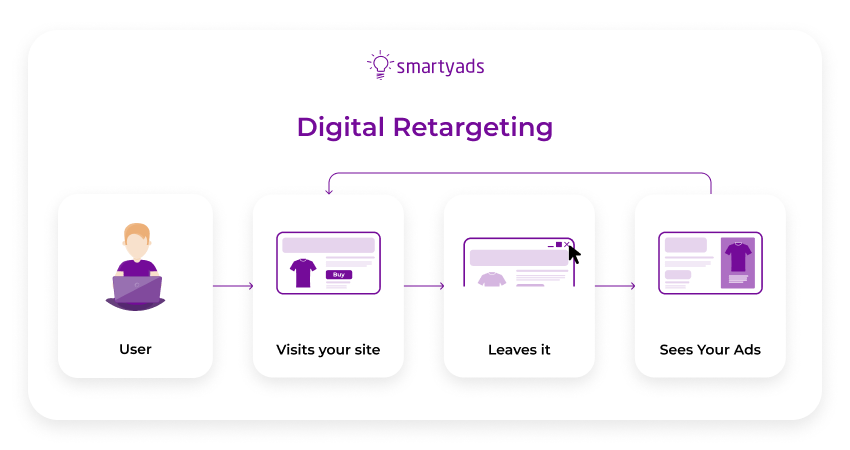
The retargeting strategy shows users:
- The pages they've visited;
- The products they viewed in the online shop, but didn't complete a purchase.
Advantages of retargeting ads for advertisers
Ads usually work for new users who aren't yet in the marketing funnel, and they won't have to get there. Retargeting audiences are users who are already in the funnel, meaning they have previously interacted with the brand.
Building communication with them is easier, and retargeting itself is cheaper than standard advertising.
What does retargeting ad give to business:
Increased visibility
Users often see your brand: products and offers. For this reason, retargeting is used by 70% of marketers.
When a person forms a need for a product or service, they will remember your brand in the first place, which means it can increase your brand recall.
Increase LTV (lifetime value)
As a result, the revenue from users who buy again and again is higher and ad spend is lower.
Promoting new customers through the sales funnel and preventing abandoned carts
Site retargeting reminds of abandoned and reviewed items and motivates them to return to purchase. It increases the number of purchases: according to statistics, the conversion rate increases by up to 150%.

How retargeting works
Retargeting ads
For an advertiser's retargeting ads to induce a potential customer to make a conversion, you need to display appropriate creative resources that attract website visitors and induce them to return to your site or app.
Retargeting in digital marketing typically uses these types of ads: banner ads consisting of text and images, video ads, and audio ads. It's necessary to remind the consumer what they were interested in during a previous visit and to deliver your brand message.
The main way in which retargeting ads can be displayed to the right user is through the use of cookies or the recently introduced The Trade Desk Unified ID 2.0.
Third-party cookies
It works like this: a remarketing pixel is placed on every page of the advertiser's site, and a cookie is tagged in the user's browser.
The advantage of site retargeting cookies is that the system can track their journey through the pages and immediately serve ads to the users.
These cookies are considered primary data tracked by advertisers, which store a user's data in a web browser after they visit a particular website.
Cookies remember things like their unique user ID or global user ID (GUID) to log in to the site and users' actions on the site.
The primary data collected through these cookies helps advertisers and agencies to show users accurately targeted ads, which ultimately increases conversion rates.
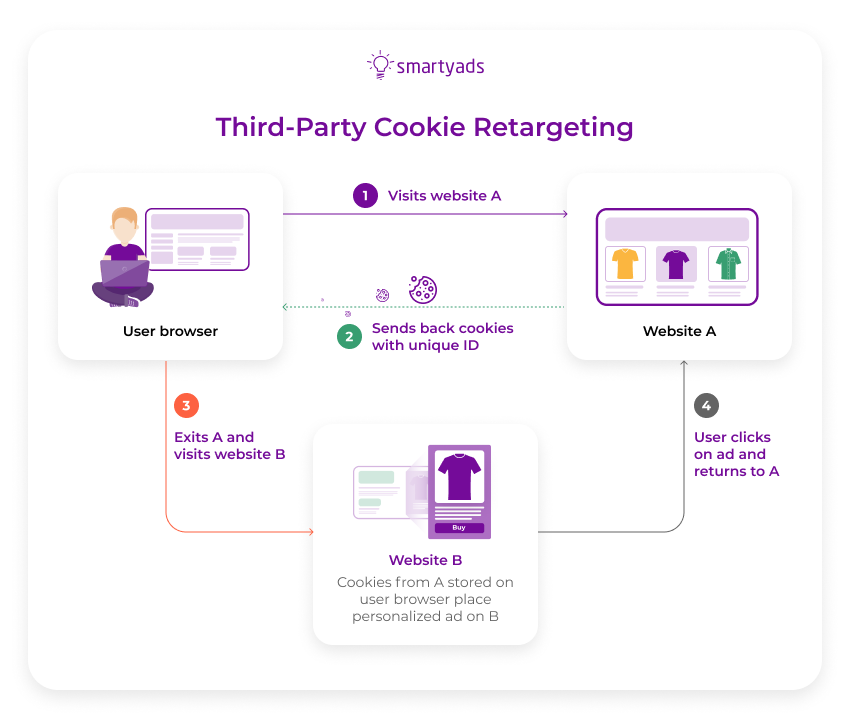
However, it's worth remembering that Google has been talking about disabling cookies even before the pandemic. Although the event has been delayed for a very long time, the cookie phase-out date is set for 2023.
Whether or not cookies will be disabled this time, no one knows, but it is worth thinking about alternative advertising technologies to ensure your marketing security.
TTD Unified ID 2.0
With Google threatening to remove third-party cookies, The Trade Desk has developed a new and better approach to identification for the open web with the Unified ID 2.0 solution.
Relevant advertising delivers the messages advertisers want to the user in the most appropriate and least annoying way possible. The existence of this type of advertising is beneficial to everyone and therefore should not be allowed to disappear.
The Trade Desk relies on the work of industry-leading partners and collaborators across the ecosystem to develop an open-source identity platform.
This identifier, created from hashed and encrypted email addresses, will remain open and omnipresent while making significant improvements in consumer privacy and transparency and ultimately reducing reliance on third-party files.
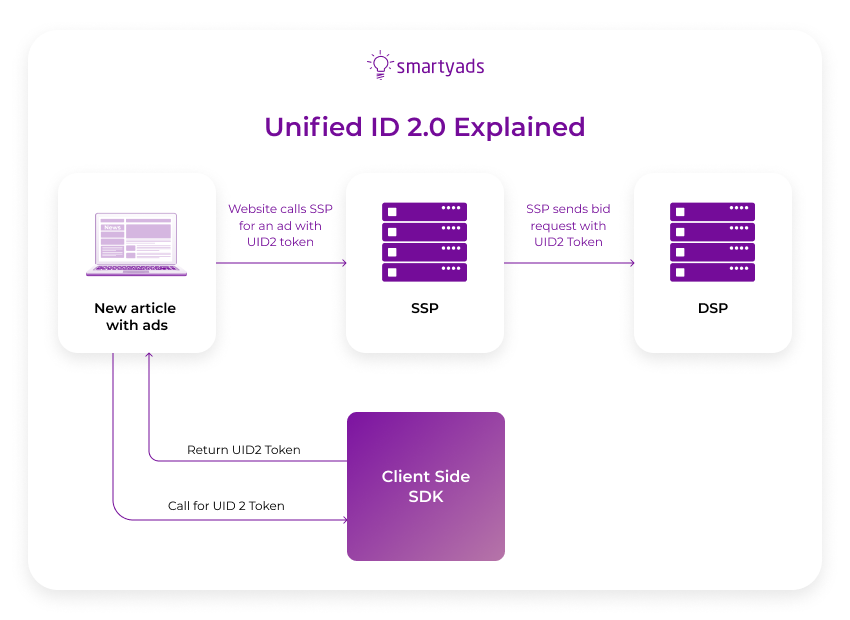
Types of retargeted ad campaigns
Of course, each advertiser's marketing efforts are different, depending on the characteristics of the particular brand.
Different retargeting models can be used to achieve different campaign goals. We suggest discussing the most popular retargeting advertising models.
What's the difference? Retargeting vs remarketing.
Behavioral retargeting campaigns
It's almost like behavioral targeting. This type of retargeting assumes that the advertiser interacts with the visitor, depending on their activity or performing the desired actions on the website. To do so, the remarketing pixel is placed on one or all of the pages of the advertiser's platform.
When the user enters the site, the pixel sets a cookie in the user's browser, which then tracks the visitor's journey through pages.
The advertiser can then analyze the activity and determine which retargeting campaign to show the user when they are no longer on the site.
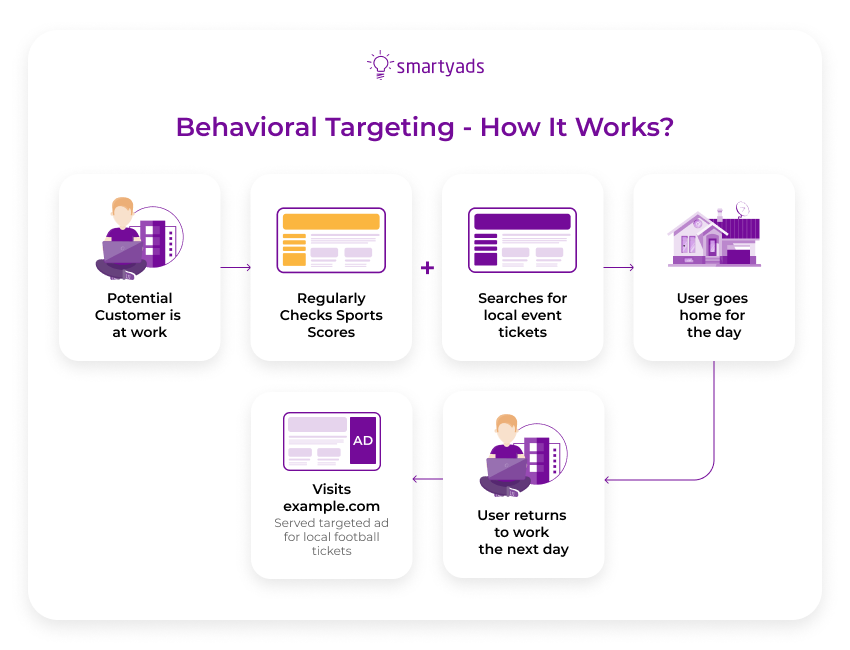
Contextual retargeting campaigns
With contextual retargeting, websites with similar themes exchange advertising data about pixels or cookies with other sites. For example, this is what happens when a user leaves one fashion site and goes to another platform in that category.
The advertiser from the first site can show their retargeting to the user on the second site visited and vice versa. This method is extremely effective for many brands looking to reach a specific audience while keeping the cost per user low.
Static and dynamic retargeting
Static retargeting shows general information about the brand. The segments of the campaign are known in advance: all visitors of the site or a certain category, and so on. The advantage of retargeted ads is the reach of more users, but the downside is the lack of personalization.
Dynamic retargeting takes into account a user's interests and shows specific products or services that were viewed by that person. This type of retargeting is personalized and suitable for online stores.
Example. The person was surfing an online shop page for a laptop N brand, read the description and reviews, but did not make an order. After that, the user starts to be haunted by ads for this particular gadget.
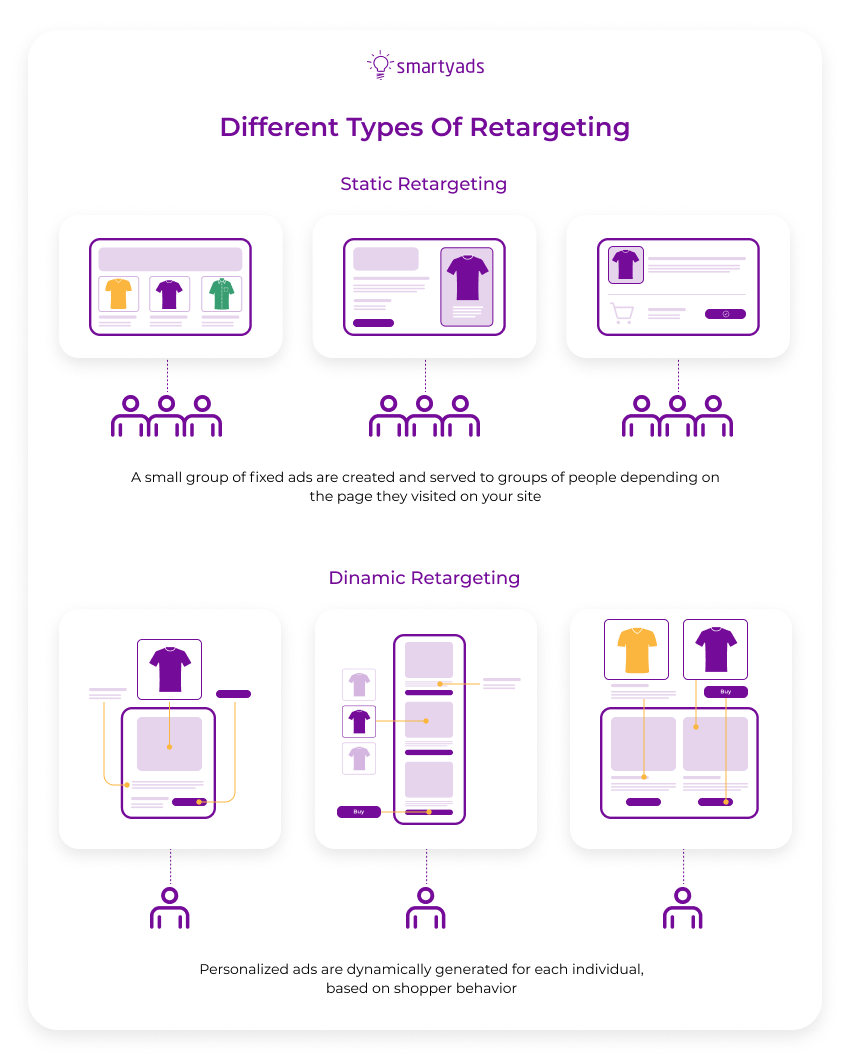
Is retargeting effective?
Leverage retargeting, like any other type of advertising, can be effective when it is properly set up and has good creatives. However, there is still data that confirms the usefulness and relevance of retargeting among both advertisers and users.
For example, 38% of consumers say they like retargeting ads, especially if it allows them to make profitable purchases.
And 68% of digital marketing agencies shift most of their budgets to retargeting because it works (Lazar, 2020).
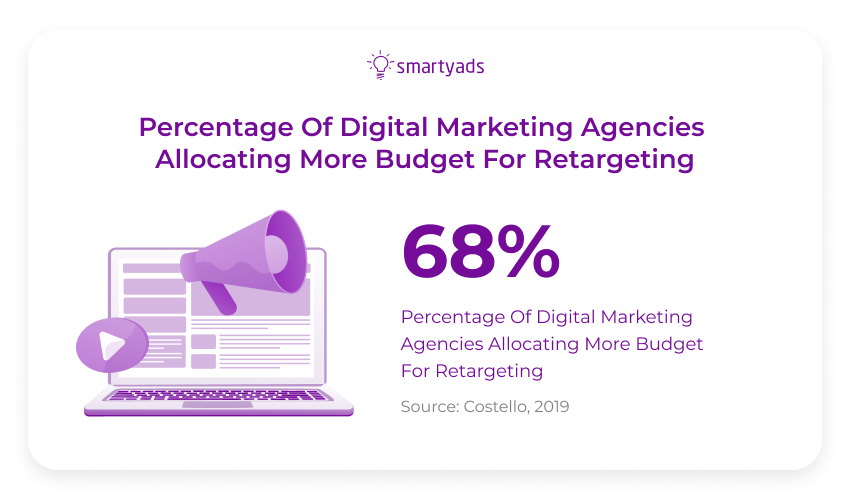
Besides, we should also not forget about the existence of the mere-exposure effect, which, in fact, means that the more a person sees something, the more they begin to like it.
A thing that has become familiar and habitual is unlikely to cause rejection, on the contrary, it may cause interest and sympathy.
This is the principle by which the entire retargeting system works.
How to set up retargeting
Each platform technically configures retargeting differently, but the principles and targeting strategies for such advertising are always similar. We've tried to put together media plan steps that will work for any retargeting strategy at different stages.
Determine the goal
In this stage, you need to decide what you want to achieve with the campaign: reduction of abandoned carts, content virality, increase in conversions, and so on.
Choose your target audience
Here you need to decide who you want to display ads to: regular site visitors to the website, those who have access to a specific section, or who are interested in a specific product. You can display ads to your first-party audience as well as to the third-party audience.
A strong call to action
You need a good CTA for the ad. Users always need clear instructions, otherwise, they simply will not do anything. Tell them clearly what you want them to do: buy the product, register, take part in the promo, etc.
Set a campaign timeline
Campaign timing means how long the banners will "catch up" with the customer from the moment they interact with your content.
You can't "chase" a user forever in the hope that they will someday give up and make a purchase.
Be sure to test the effectiveness of your banner display times to determine which is most relevant for getting the desired conversion.
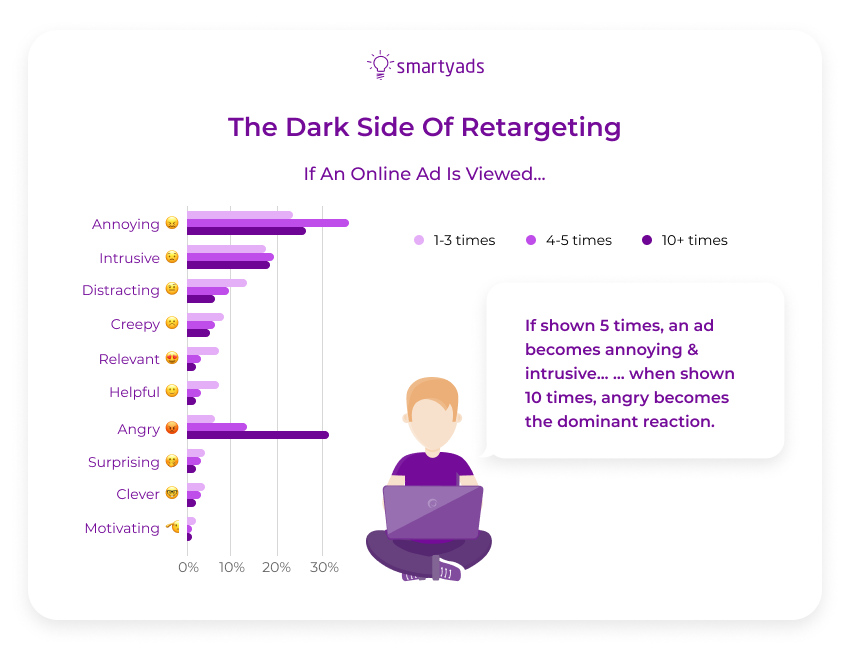
Make settings in the service of your choice
Run retargeting on the audience collected through the cookie data or on your first-party data. You can also use look-alike technology, where the system selects appropriate users to show ads based on existing criteria.
Bottom Line
Retargeting is an important tool for every marketer to re-engage customers. And programmatic platforms like SmartyAds allow you to make this tool accessible, simple, and understandable.
Without programmatic platforms, retargeting is impossible to perform at all. That's why such platforms are a tremendous asset and a handy marketing tool.
Start a retargeting campaign with SmartyAds now!

